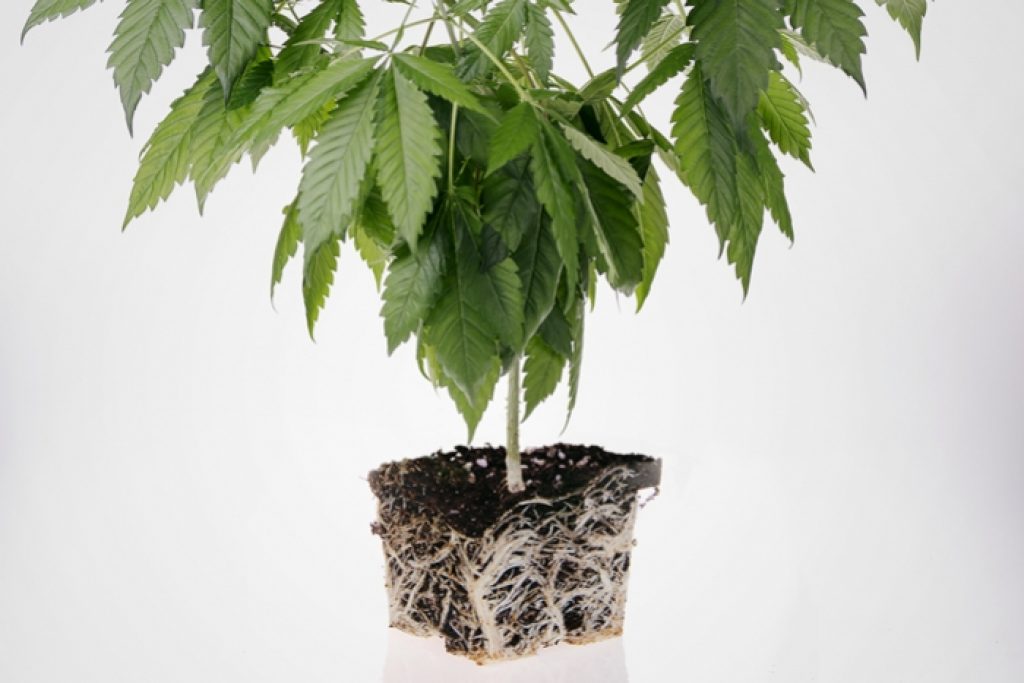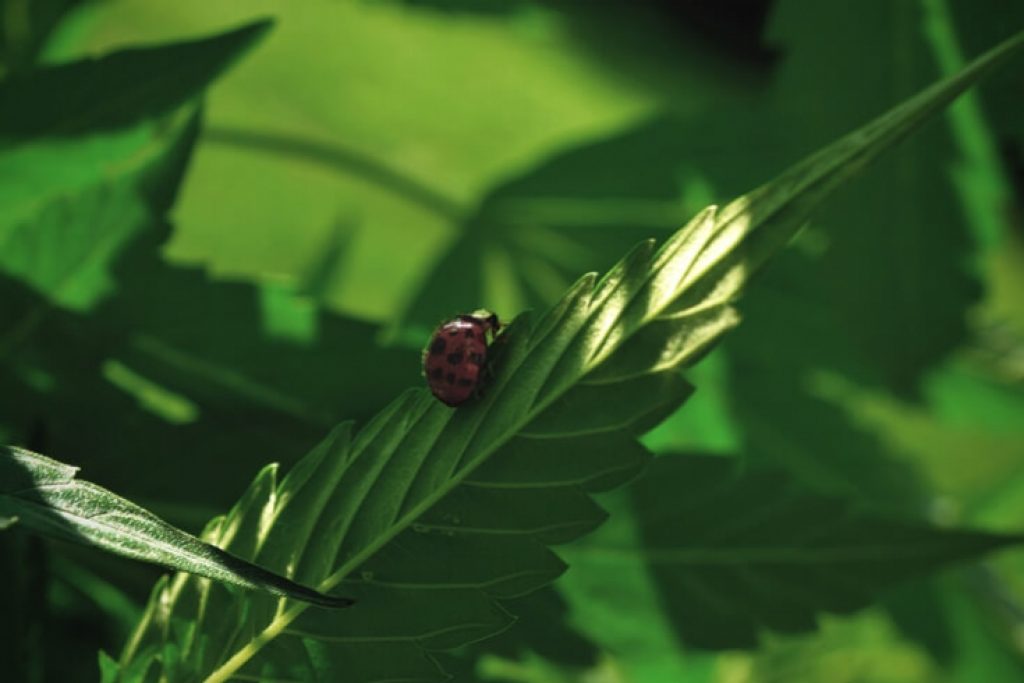
Top 6 Common Mistakes Made by Cannabis Growers
In this article, we’re going to talk about the six most common mistakes made by cannabis growers and how to avoid them.
Mistake №1
Contents
The first one, overwatering. This is made by expert growers and also beginner growers so it’s not something to take lightly. With overwatering, we like to do something called the six-inch test. So we dig down into our soil six inches, and we’ll clump the soil, and if it forms a ball and that ball stays together and there’s a little bit of, you actually can see some moisture in there, it’s not time to water.
If you make the ball and it stays together but some bits are crumbling and you’re not feeling a lot of moisture in there, you can water. If it is really staying together and there’s a lot of moisture, you’re going to want to wait a few more days and do the test again. See where things are at. Some people see the top inch, two inches are dry, and they feel like they just water, and the water, and the water when really cannabis roots go down like the roots of any plant and you need to make sure that you’re not just looking at that top couple inches.
Mistake №2
So the second one, root-bound or sick starts. If you’re starting your own starts from the clone and/or from seed, you want to make sure you have healthy vigorous starts. So one issue might be genetics. The genetics of the plant might not be so great that there’re genetic mutations or it’s pretty runty. You’re not going to want to use that plant because you’re going to be behind when you put them in the ground. They’re just not really going to start to grow with much vigor. So another thing is root-bound. One issue that a lot of people have is they don’t transplant their starts in time, so they end up with roots that sometimes start to decay. They’re brown, they’re decaying and there’s a chance for bacteria to come in there and really affect the whole plant system.

So it’s important to transplant, up the pot, your starts, so one way to do it and how we do it is about every two weeks we put them in a bigger pot. We look at the bottom of the starts and if you’re starting to see a lot of those roots starting to coil up, it’s time to transplant. Ideally, you want to transplant well before then, but if you get to that point and you’re starting to see the roots come down, that’s when you want to transplant. You want to up pot them so that they don’t get root bound, so the plants stay super vigorous.
Mistake №3
Using too much or too little nutrients. It’s an issue that we all have beginners, experts on what to do, especially if even an expert comes into a new garden, it’s going to be different because that soil is going to have different nutrient content. They’re going to want to pump it full of nutrients, but they’re not going to want to do too many new nutrients. An example of this is we had a new garden and a new member of our team was really excited about really huge vigorous plants and started to pump the soil with a lot of nitrogen. And a couple of the plants got burned. You could see it on the leaves, it’s right after you feed so it was really clear that they had nitrogen burn.
And these three plants got hit really hard with that burn and were really stunted. Besides what you can actually see on the leaves, the roots also got really damaged. The roots died a bit from the nitrogen burn, and they got brown, and they were kind of decaying, created kind of like a composting in the soil which bred bacteria. Eventually, those plants all died, wilted and died, because of that bacteria that took over the plant. So it’s really important not to use too many nutrients.
If you have nitrogen that’s over 10 it’s likely synthetic and it’s going to be a lot easier to burn your plants. However, even with four or five, six nitrogen, you can still burn your plants if you use too much. So it’s too much detail to go in right now but stay tuned when we’ll do a really in-depth feeding schedule. So staying with too little nutrients, you’re not going to harden plants if you do too little nutrients, however, your plants might just not get really big or buds might not get really huge. So again, just stay tuned, and we’re going to deliver you a really precise feeding schedule.
Mistake №4
Number four is not doing pest prevention. So the way to avoid it is to do pest prevention. So whether you have a well-established garden or brand-new garden, especially if you have a brand-new garden because your soil is like a blank slate, there’s really not much going on in it. So we like to inoculate our soil with essential microorganisms. We like to provide it with beneficial bacteria, beneficial fungus, beneficial mushrooms, and mycelium. This helps really cultivate a culture in that soil, which is going to fight off the bacteria, the fungus that you don’t want in your soil.
So another way of doing this is full of your feeding. Things like Neem, things like Actinovate. There’s a whole range of organic insecticides that are both going to kill pests that maybe there in small numbers they don’t proliferate, or they make the leaves not tasty so it’s not really hospitable to pests to come. And there are also some organic sprays that help cultivate the bacteria and the fungus that you’re going to want that will fight off the bacteria and the fungus that you don’t want. Another great pest prevention is beneficial mites and they will fight off the russet mites and the mites that you do not want. And we’re going to do an in-depth episode for you on the beneficial mites and the ways of doing that.
And another thing, just to tune in on that, is it seems each year here in Southern Oregon, there’s another pest that seems to take over everyone’s garden. And so even if you have a well-established garden and you think your soil’s just rocking it’s really still important to do pest prevention. Especially if you’re in areas that there’s a lot of people growing because those pests to spread around.

Mistake №5
So the fifth, not managing pH. A lot of people don’t know to manage pH and it’s quite a simple thing. The ideal pH is 6 to 6.5 and certain nutrients are absorbed into specific pHs and 6 to 6.5 is really the best range where most nutrients are absorbed in. So the pH in your water is the way to go. Get a pH pen, check your pH, get pH Down, get pH Up from your local grow shop and you can modulate your pH that way.
The pH of your water though is also going to interact with the pH of your soil so if you perfectly pH water it doesn’t mean that your soil is going to be perfectly pH. So that’s another thing that you have to work at in terms of getting your soil in that perfect pH range. However, having your water pH at the perfect range is definitely going to help to keep or getting your soil into that perfect pH.
Mistake №6
So the final thing is improper harvest and curing. So this is a challenge for beginner growers and also growers who have been growing for a while because curing properly, drying properly, and harvesting properly, really take a lot of experience. So improper harvest, the time that you want to harvest is when about 30% of the calyxes are amber. And the way to do that is getting a 30x microscope, look at your lead, look at your buds and you’ll see these little hairs that come up with the little circle on top and you want them when about 30% of those are amber.
Some people get really excited, and they want to harvest early and some people want to wait because as you wait each day those buds get denser. So that’s beneficial. However, there is a certain breaking point where the buds start to decay, degenerate. They’re just not as potent. And another thing with waiting is mold. As the season goes on, temperatures get colder, there’s more dew in the morning, the rains start to come and mold can start to build and spread. And sometimes mold is hard to find in an earlier stage. It really hides in those denser buds until all of a sudden it just blooms and it’s all over a whole plant. So it’s something to stay tuned on.
Sometimes there are reasons to harvest early. If you have a whole rain that’s about to come and you have really dense buds out there, you might want to harvest early to avoid the rains. If you’re not concerned about rains, then you really want to wait until you have about 30% amber on those hairs. So curing properly, curing properly’s a really important thing. A lot of people, they’ll just take in the buds, hang it on the line and that’s it.
But once you take it off the line of where you’re drying it and you put it in a bin, they do rehydrate. There’s some moisture in those stems. Some people don’t realize that. They put them in a bin or bag it up, and then they get mold after the fact. So we do something that’s called sweating the bins. You put the dry product in the bins, you close it. Every day, maybe twice a day you open it, you check the moisture, you turn it, you might leave that bin open so it dries out a bit. That’s a process that we go through that we’ll go in more depth as the season goes on, and we all get into harvesting, drying, and curing.


